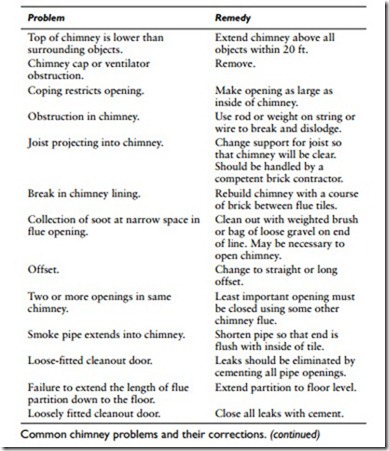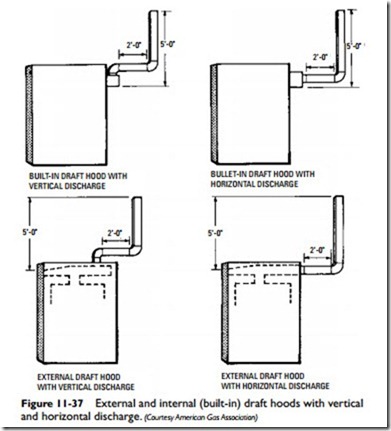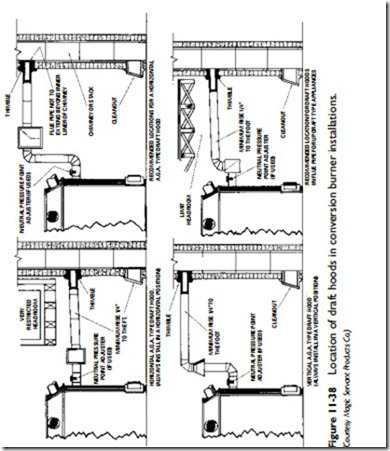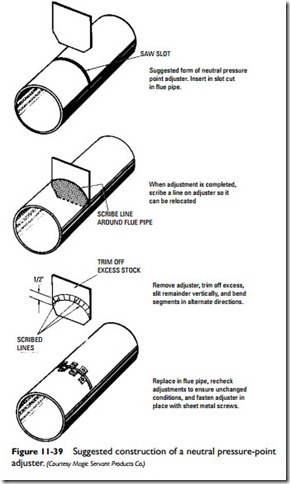Chimney Troubleshooting
The chimney must give sufficient draft for combustion or the furnace will not operate efficiently. It must also provide a means for venting the products of combustion to the outside. Although a chimney-produced draft is not as important for the combustion process in gas-fired appliances as it is in other types of fuel-burning equipment, the venting capacity of the chimney is extremely important. The chimney must be of a suitable area and height to vent all the products of the combustion process.
Figure 11-36 illustrates some of the common chimney problems that can cause insufficient draft and improper venting. Some of these problems are detectable by observation; others require the use of a draft gauge.
Sometimes a chimney will be either too small or too large for the installation. When this is the case, the chimney should be rebuilt with the necessary corrections made in its design.
Draft Hood
A standing-pilot (continuously burning pilot) gas furnace is equipped with a draft hood attached to the flue outlet of the appliance. The draft hood used on the appliance should be certified by the American Gas Association. Only gas conversion furnaces equipped with power-type burners and conversion burner installations in large steel boilers with inputs in excess of 400,000 Btu/h are not required to have draft hoods.
A draft hood is a device used to ensure the maintenance of con- stant low draft conditions in the combustion chamber. By this action, it contributes to the stability of the air supply for the combustion process. A draft hood will also prevent excessive chimney draft and downdrafts that tend to extinguish the gas burner flame. Because of this last function, a draft hood is often referred to as a draft diverter.
Note
Mid-efficiency furnaces (the so-called induced-draft furnaces) do not have a draft hood. They use a small fan located in the flue to induce a draft. High-efficiency gas furnaces also do not have draft hoods.
Draft hoods may be either internally or externally mounted, depending on the design of the furnace. Never use an external draft hood with a furnace already equipped with an internal draft hood. Either vertical or horizontal discharge from the draft hood is possible (Figure 11-37). Locations of draft hoods in conversion burner installations are illustrated in Figure 11-38.
In some installations, a neutral pressure-point adjuster is installed in the flue pipe between the furnace and the draft hood. The procedure for making a neutral pressure-point adjuster is illustrated in Figure 11-39. Always leave the neutral pressure-point
adjuster in wide open position until after the burner rating has been established.




